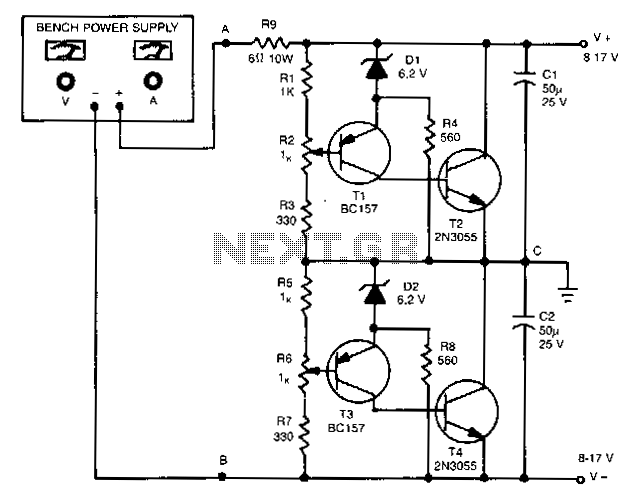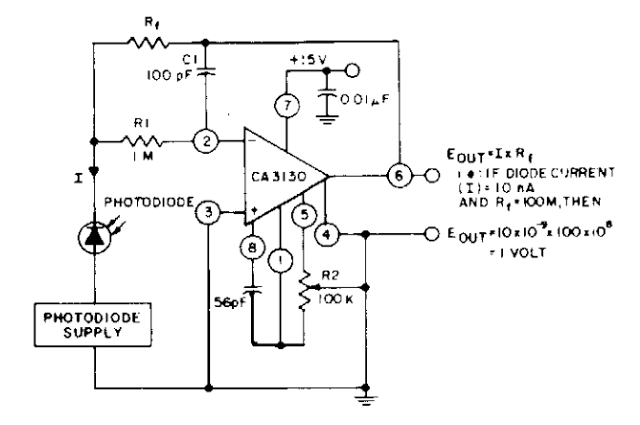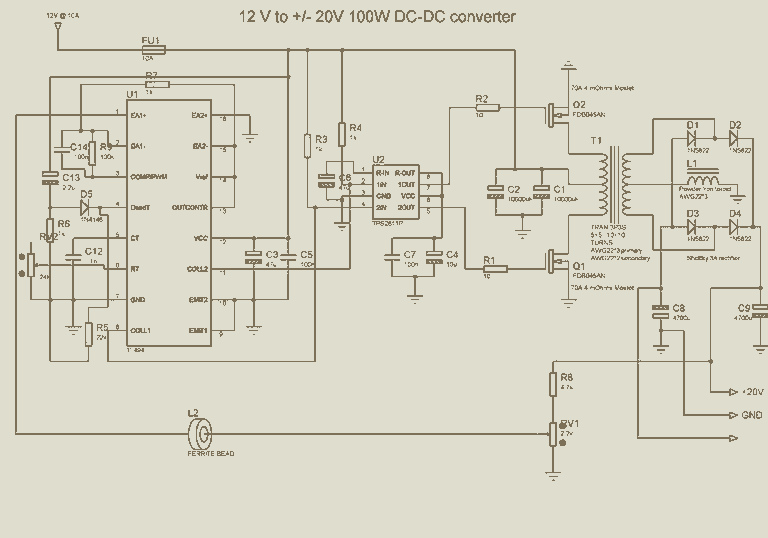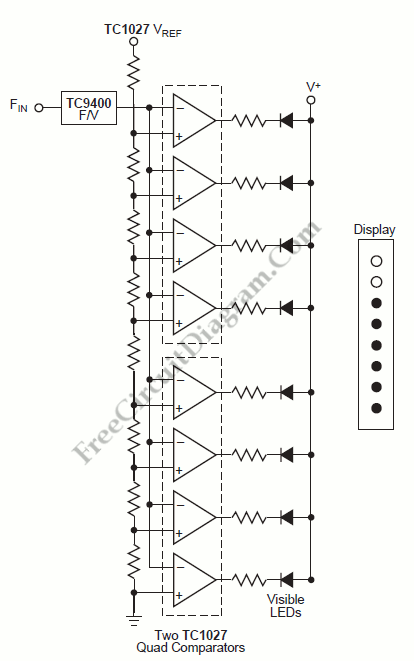
Rgb/Ntsc Converter
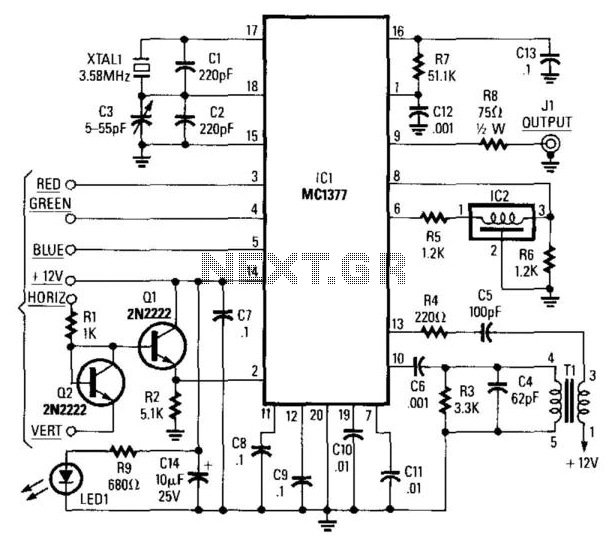
This circuit utilizes a Motorola MC1377 to generate NTSC video from an RGB source. The components are not critical, with the exception of resistor R7, which should have a tolerance of 1%, and capacitor CB, which should have a tolerance of 2%.
The circuit employs the Motorola MC1377 integrated circuit, which is designed specifically for video signal processing. It converts RGB signals, typically used in computer graphics and high-quality displays, into the NTSC format suitable for standard television broadcasts. The MC1377 achieves this by taking the three separate color signals (Red, Green, and Blue) and combining them into a composite video signal.
Resistor R7 plays a crucial role in setting the gain of the circuit. Its 1% tolerance ensures that the gain remains consistent, which is important for maintaining video quality and preventing distortion. A variation in this resistor's value could lead to significant differences in output brightness and color accuracy.
Capacitor CB, with a tolerance of 2%, is likely involved in filtering or coupling within the circuit. The tolerance level is important as it affects the frequency response and stability of the video signal. A capacitor with too high a tolerance could introduce unwanted noise or signal degradation, impacting the overall performance of the video output.
In summary, this circuit design effectively transforms RGB signals into an NTSC video format, ensuring high fidelity in color reproduction and signal integrity through careful selection of component tolerances. Using a Motorola MC1377, this circuit produces NTSC video from an RGB source. Components are not critical, except for R7 and CB, which should be 1% and 2% tolerance, respectively.
The circuit employs the Motorola MC1377 integrated circuit, which is designed specifically for video signal processing. It converts RGB signals, typically used in computer graphics and high-quality displays, into the NTSC format suitable for standard television broadcasts. The MC1377 achieves this by taking the three separate color signals (Red, Green, and Blue) and combining them into a composite video signal.
Resistor R7 plays a crucial role in setting the gain of the circuit. Its 1% tolerance ensures that the gain remains consistent, which is important for maintaining video quality and preventing distortion. A variation in this resistor's value could lead to significant differences in output brightness and color accuracy.
Capacitor CB, with a tolerance of 2%, is likely involved in filtering or coupling within the circuit. The tolerance level is important as it affects the frequency response and stability of the video signal. A capacitor with too high a tolerance could introduce unwanted noise or signal degradation, impacting the overall performance of the video output.
In summary, this circuit design effectively transforms RGB signals into an NTSC video format, ensuring high fidelity in color reproduction and signal integrity through careful selection of component tolerances. Using a Motorola MC1377, this circuit produces NTSC video from an RGB source. Components are not critical, except for R7 and CB, which should be 1% and 2% tolerance, respectively.
